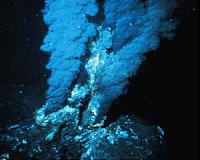| . |  |
. |
Mumbai (AFP) May 12, 2011 The number of endangered South Asian vultures being killed by a banned painkiller has declined substantially, scientists say, raising hopes that species in the region can be saved from extinction. But the researchers warned that the death rate from diclofenac was still too high and more needed to be done to eradicate illegal use of the drug to prevent the number of birds being poisoned creeping back up. The study, led by Britain's Royal Society for the Protection of Birds, looked at more than 4,500 liver samples, mainly from cattle and water buffalo carcasses, at 21 sites across India. Some 10 to 11 percent of samples from 2004-06 -- shortly before and after India banned veterinary use of the drug -- contained the painkiller, which causes a fatal kidney ailment in vultures called visceral gout. But diclofenac was found in only 5.6 percent of samples from January 2007 to December 2008 and the concentration of the drug had also declined, said the study, published in the May edition of the peer-reviewed journal PLoS One. Based on the results, the scientists estimated that the number of vultures expected to be poisoned per meal would have changed little between 2004 and 2006. But by 2007-2008 estimated death rates "had slowed appreciably", said the study, entitled "Effectiveness of Action in India to Reduce Exposure of Gyps Vultures to the Toxic Veterinary Drug Diclofenac". Conservationists working to save the vulture in South Asia are likely to welcome the study's findings. Three species of the bird are found on the Indian sub-continent -- the oriental white-backed vulture, the long-billed vulture and the slender-billed vulture, collectively known as gyps vultures. Their numbers plummeted by as much as 95 percent after diclofenac was introduced in the mid-1990s to treat colic in cattle, whose carcasses are left in the open after they die and are a food source for the scavengers. A 2007 study by the Bombay Natural History Society conservation group estimated that there were only about 11,000 white-backed, 1,000 slender-billed and 44,000 long-billed vultures left in India. The RSPB scientists said their findings were "encouraging" but continuing deaths from diclofenac were "of major concern" as it suggested the drug was being used illegally. A similar situation "probably exists" in Nepal and Pakistan, they added. "Only a very low proportion (less than one percent) of ungulate (hoofed mammals) carcasses is required to contain lethal levels of diclofenac in order to account for the rapid pre-ban population declines of gyps vultures," they said. Even though it is now illegal to import, manufacture, sell or use diclofenac for veterinary purposes in India, a human version of the drug is still available, which may be being used to treat animals. The scientists said more work was needed to prevent diclofenac being replaced by other painkillers like ketoprofen that have a similar toxic effect on vultures, and to promote drugs such as meloxicam, which are less poisonous. The full study can be found at: http://www.plosone.org/article/info%3Adoi%2F10.1371%2Fjournal.pone.0019069
Share This Article With Planet Earth
Related Links Darwin Today At TerraDaily.com
 Growing on Fool's Gold
Growing on Fool's GoldMoffett Field CA (SPX) May 12, 2011 Similar to humans, the bacteria and tiny plants living in the ocean need iron for energy and growth. But their situation is quite different than ours - for one, they can't exactly turn to natural iron sources like leafy greens or red meat for a pick-me-up. So where does their iron come from? New research published by Nature Geoscience points to a source on the seafloor: minute particles (c ... read more |
|
| The content herein, unless otherwise known to be public domain, are Copyright 1995-2010 - SpaceDaily. AFP and UPI Wire Stories are copyright Agence France-Presse and United Press International. ESA Portal Reports are copyright European Space Agency. All NASA sourced material is public domain. Additional copyrights may apply in whole or part to other bona fide parties. Advertising does not imply endorsement,agreement or approval of any opinions, statements or information provided by SpaceDaily on any Web page published or hosted by SpaceDaily. Privacy Statement |